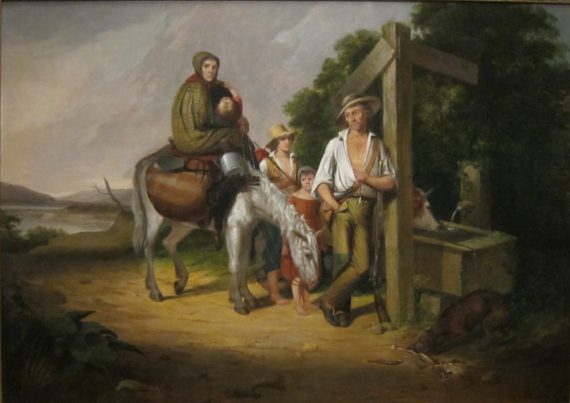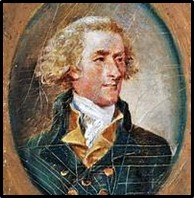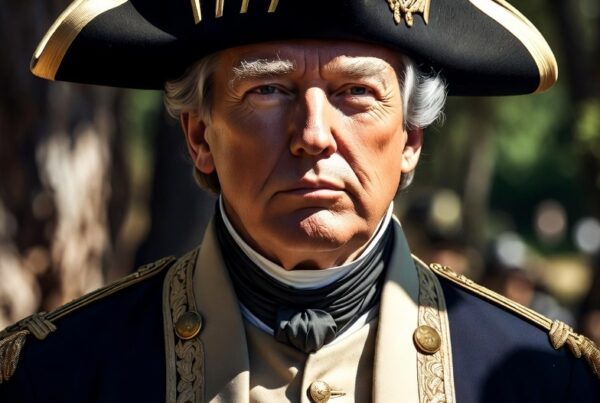There was a time, before universal white male suffrage and the closing of the frontier, when the poor whites of the South were considered shiftless and without caste. If we were to look at the South as a hierarchical system, it could be argued that the poor whites were a kind of pariah. There’s a common misconception that all whites during the antebellum period had an equal standing economically and socially.
The Old South was a complex society, not just a place comprised merely of free whites and enslaved blacks. There were indentured servants, African slaves, Native Americans, poor white yeoman farmers, and a wealthier landowning aristocracy. Some of the first colonies were owned by wealthy English barons (like the Lords Proprietors in Carolina) and after the Revolution, most states had property requirements that kept the poor whites from voting.
Most people look at the South as a society that had slaves at the bottom, with all the whites having a higher social standing. But it must be remembered that Europeans initially brought Africans to America, and “Southern” people were a distinct group that developed over time, alongside and combined with this African population. There have always been poor and toiling people of all races, and some Southern writers have even argued that the early planting classes weakened the white backcountry populations economically. W.J. Cash described the poor whites of the backcountry as:
“…those who had been driven back farthest – back to the red hills and the sandlands and the pine barrens and the swamps – to all the marginal lands of the South; those who, because of the poorness of the soil on which they dwelt or the great inaccessibility of markets, were, as a group, most completely barred off from escape or economic and social advance. They were the people to whom the term ‘cracker’ properly applied – the ‘white-trash’ and ‘po’ buckra’”
“Po’ buckra” was Gullah for “poor white man.” If we were to look at history from this perspective, it could be argued that these poorest of whites were of a different stock than planting families and hierarchically just as low (if not lower than) black slaves in the Old South. The physical differences of these backcountry folk was noted by Timothy Flint, who in 1816 wrote recollections from traveling down the Mississippi and noted that the poor whites in the region “claim to be the genuine and original breed, compounded of the horse, alligator, and snapping turtle.” These whites lived on a diet that primarily consisted of corn pone and the flesh of razorback hogs, were reputed to eat dirt from time to time (a practice still found in some rural Southern communities today), and often suffered from nutritional diseases.
Bertram Wyatt-Brown noted that poor whites in the Old South were subjected to “the ancient prejudice against menials, swineherds, peddlers, and beggars.” Some examples of this prejudice include William Perkins, an English divine, who wrote in 1632 that poor whites were “as rotten legs and arms that drop from the body.” Another man named Daniel R. Hundley wondered if the hog-raising, hill folk of the South were a result of bad genetics and asked “…who ever yet saw an athletic, healthy human being, standing six feet in his stockings, who was the offspring of runtish forefathers, or wheezy, asthmatic, and consumptive parents?”
One of the finest literary examples of this kind of poor white can be found in Mark Twain’s The Adventures of Huckleberry Finn. Huck’s alcoholic father, Pap, had “long and tangled and greasy” hair that draped over his eyes like vines. Pap also wore rags for clothes and his skin was described as “not like another man’s white, but a white to make a body sick, a white to make a body’s flesh crawl – a tree-toad white, a fish-belly white.” Clearly, even whites were not afraid to point out the “white trash” within their own communities.
Another example can be found in A.B. Longstreet’s story “The Fight” in his book Georgia Scenes. One character in the story was named Ransy Sniffle, a young man from Richmond who lived to fight and was raised on copious amounts of red clay and blackberries. Longstreet described this character by saying “His shoulders were fleshless and elevated; his head large and flat; his neck slim and translucent; and his arms, hands, fingers, and feet were lengthened out of all proportion to the rest of his frame. His joints were large and his limbs small; and as for flesh, he could not, with propriety, be said to have any. Those parts which nature usually supplies with the most of this article — the calves of the legs, for example — presented in him the appearance of so many well-drawn blisters.” The story goes on to describe a brawl between two backcountry legends that resulted in one man losing an ear and a large piece of his left cheek, while the other man lost about a third of his nose and his face was swelled to the point of being unrecognizable.
BACKCOUNTRY VIOLENCE
The bloody scene Longstreet described was an all too common occurrence in the backcountry. While some consider the South to have been paternalistic and genteel, this treatment rarely branched out to the poor whites beyond the plantation. The planter class was refined and cavalier, while the poor folk had virtually nothing but their whiteness, perhaps a small patch of corn, and their fighting ability to be proud of. This is why “rough and tumble” brawling (complete with eye-gouging, scratching, and even biting) was a popular pastime in the backcountry.
Timothy Flint’s Recollections reinforced the existence of this mindset by saying “…according to their definition, the question about the ‘best’ man had been reduced to actual demonstration. I found, on farther inquiry, that the ‘best’ man was understood to be the best fighter, he who had beaten, or, in the Kentucky phrase, had ‘whipped’ all the rest.” In other words, societal standing in the backcountry was predicated on how a man could handle himself in a fight.
In 1807, an English traveler named Charles William Johnson published a book titled The Stranger in America, which described this backcountry violence in explicit detail. Traveling through Georgia, Johnson witnessed an eye gouging match and found the fighters “fast clinched by the hair, and their thumbs endeavoring to force a passage into each other’s eyes; while several of the bystanders were betting upon the first eye to be turned out of its socket.” One of the combatants, a Carolinian named John Butler, had his eye gouged out by a Georgian and after the match ended, Johnson stated the “The savage crowd applauded, while sick with horror, we galloped away form the infernal scene…the first eye was for the honor of the state to which they respectively belonged.”
Johnson also described some local fighters and explained that these “rough and tumble” matches included the use of teeth, feet, scratching, and biting. One man named John Stanley, of North Carolina, was described as having sharpened his teeth with a file and bragged about the noses and ears he had bitten off, as well as cheeks he tore apart. Another man named Thomas Penrise, also from North Carolina, was defending himself from a group of sailors when he gouged out three eyes, bit off an ear, and tore some cheeks before retreating.
Unlike today, there was not always a consequence for this type of lawlessness. In fact, courts at the time tended to pursue crimes against property more vigorously than these instances of violence. One man named Jarvis Lucas was beaten by three men who bit, gouged, and kicked him repeatedly. At the trial for this assault in a Carolina court of justice, the three attackers received a small fine only as the punishment. Charles Johnson closed his description of this poor white violence with the following thoughts:
“The lower classes in this gouging, biting, kicking country, are the most abject that, perhaps, ever peopled a Christian land. They live in the woods and desarts [sic] and many of them cultivate no more land than will raise them corn and cabbages, which with fish, and occasionally a piece of pickled pork or bacon, are their constant food…Their habitations are more wretched than can be conceived; the huts of the poor of Ireland, or even the meanest Indian wig-wam, displaying more ingenuity and greater industry. They are constructed of pine trees, cut in lengths of ten or fifteen feet, and piled up in a square, without any other workmanship than a notch at the end of each log, to keep them in contact…Amid these accumulated miseries, the inhabitants of log-houses are extremely tenacious of the rights and liberties of republicanism.”
One explanation for this predisposition to violence might be, as David Hackett Fischer argued in Albion’s Seed, that the backcountry was filled with small family farms that flourished independently alongside abundant sources of water. Fischer pointed out that the condition these families lived in “encouraged a sense of stubborn autonomy” and that they were a people who came looking for material betterment, not to build a city on a hill. Impermanent homes of clay and daub were often thrown up as emigrants poured into these Southern highlands and quickly formed a strong sense of individual sovereignty. The overall mindset of how justice, violence, and retaliation intertwined in the region might be best reflected in Andrew Jackson, whose mother once advised him to “…never tell a lie, nor take what is not your own, nor sue anybody for slander, assault and battery. Always settle them cases yourself.” In most cases, backcountry men tended to view themselves as the sheriff of their own property and affairs
The most shocking account of violence in Albion’s Seed was of Russell Bean, the first white child born to permanent settlers in what is now Tennessee. Bean’s life was filled with violence and he was found guilty of beating and kicking the wife of a neighbor in 1789. In 1801, Bean travelled to New Orleans and came home to discover his wife had given birth to a child out of wedlock. Bean took the child and cut off the ears to mark it and distinguish it from his own children. After being found guilty of maiming an infant, Bean was sentenced to be branded with the letter M on his hand. Once his hand was free, Bean bit out the brand with his teeth, and “spat the charred and bleeding flesh defiantly on the courtroom floor.”
Fischer also showed that backcountry violence occurred as a result of bandits and border raiders. One example can be found in 1767, when Carolina newspapers reported that robbers captured a man named Davis and tortured him in his own home with hot irons until he revealed where his hidden money was. The robbers then burned his farm for amusement and left Davis tied up to watch all of the flames. These criminals were known to mutilate victims for sport and sometimes worked in family groups. In response to this violence, the Regulator movement formed to bring people some kind of vigilante justice.
THE MYTH OF WHITE PRIVILEGE
The Southern backcountry was rife with violence, poverty, and even nakedness. While most people associate the South with plantations, honor, and acts like the pistol duel, there were thousands of whites in the South’s backcountry that equated honor with hand-to-hand combat skills and barely subsisted on tiny farm plots. When Reverend Charles Woodmason traveled through the Carolina backcountry in the 1760s, he noted that whites were living in conditions worse than Native Americans, were scantily clad, had a poor diet, and that entire families lived in one room shacks with dirt floors.
In the wake of pervasive myths like “white privilege,” it’s interesting to note that so many whites lived in groveling conditions and were literally described as savages not long ago. And there are still massive numbers of poor whites today. Just in 2015 the Supplemental Nutrition Assistance Program (SNAP) documented that there are more whites on food stamps than any other race, by a large margin. The history of the poor whites in the South shows that this poverty not some new trend, but a problem that has always been around since the founding.







